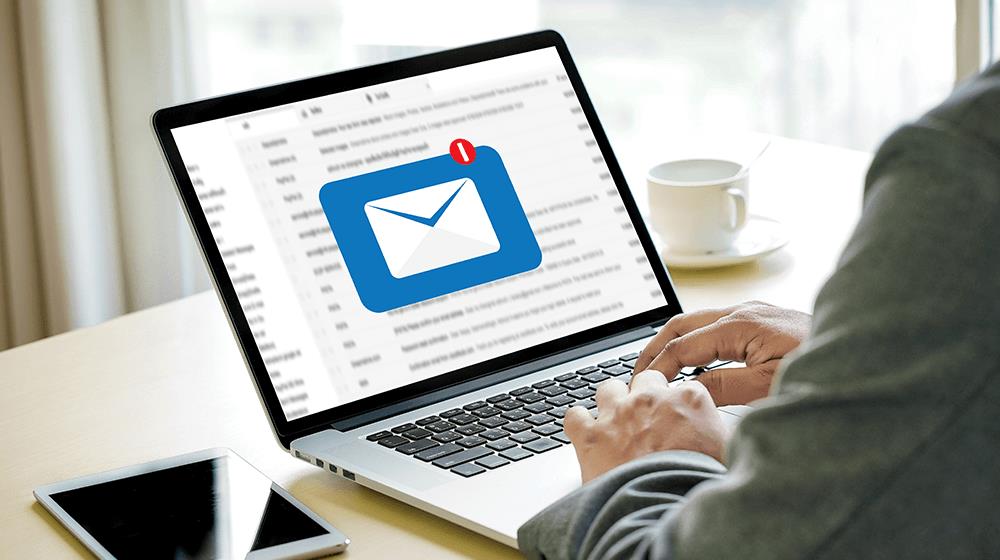||
When it comes to running a successful business, communication is key. Effective business communication not only requires clarity, but also the use of appropriate email formats and etiquette. In this article, we’ll examine 7 different email format examples for businesses to help you get started creating professional emails that get results every time. Let’s get started!
Why Is a Proper Email Format Important?
Professional emails with the proper format are important to ensure that you come across as a professional and credible person in your correspondence. It helps to convey the right message, build good relationships with your contacts and maintain a good reputation. A properly formatted email can also help keep conversations clear, organized, and on-topic.

- READ MORE: How to Recall an Email in Gmail
How Does a Formal Email Format Differ From an Informal Email Format?
A formal email format is typically less casual than an informal email format. In a formal email, you should use a more professional tone and avoid using contractions or slang. You should also generally avoid using emoticons in a formal email.
What Is the Proper Business Email Format?
Business email writing follows a certain set of conventions that distinguish it from other types of writing. By following these conventions, you create a polished and professional impression that will be appreciated by your recipients. Let’s take a look at the proper business email format and some tips for ensuring your emails are well-written and effective.
1. Professional Email Address
Your email address should be professional and easy to remember. Avoid using nicknames or other unprofessional addresses. You can create a separate email address that you use only for business-related correspondence. If your business has a website, then your email address should include your company’s domain name.
2. Subject Line
Subject lines should be clear, concise, and to the point. Use action words if possible, such as “Action Required” or “Important Announcement.” A subject line can also help your recipient recognize the purpose of the email quickly. Be sure to avoid generic subject lines like “Hi” or “Hello” as well as any potential spam words like “free” or “promotion.”
3. Email Opening
Your opening should be clear and professional. Begin with a greeting such as “Dear,” followed by the recipient’s name. If you know the person well, you can use their first name. Otherwise, stick to a more formal salutation. The opening line should also be polite and cordial, such as “I hope this email finds you well.”
4. Email Body
The body of your email should be concise and organized. Break down the content into paragraphs, each with its own topic or idea. Use active language such as “I suggest” or “We recommend” when appropriate and avoid using long words or phrases. Avoiding overly casual language like slang or abbreviations is also important.
5. Email Conclusion
An effective conclusion for your email should summarize the main points of your message and include a call to action like “please let me know if you have any questions” if necessary. Keep your email conclusion brief, polite, and professional. It can also help to include a closing salutation or other statement.
6. Email Sign Off
Your email sign-off should be polite and professional. Common examples include “Sincerely,” “Thank you,” or “Best regards.” If appropriate, you can also include a signature with contact information.
7. Email Signature
Your email signature should include your full name, job title, company name, and contact information. You can also include a headshot or logo if you want to further personalize your signature.
- READ MORE: How to Recall an Email in Outlook
Professional Email Format Tips
Business emails should follow a standard, professional email format to ensure that your messages come across as clear and organized. Here are some additional tips for creating effective business emails:
Start with a catchy, relevant subject line
When writing a professional email, your subject line should be clear and concise to ensure that your recipient knows the purpose of the email. It can also help to use action words in your subject line to draw attention.
Personalize your email
When writing a professional email, personalizing your email with the recipient’s name, job title, or company name can help create a more meaningful connection with your recipient. This is especially true for emails sent to multiple people.
Keep emails succinct and to the point
Business emails should be concise and to the point. Avoid using long words or phrases, and avoid unnecessary details that may confuse your reader. You should also keep emails short if possible, aiming for no more than two or three paragraphs.
Make your email easy to read
When writing a business email, use active language and short sentences. You should also break the content into paragraphs to make it easier for your reader to skim. Avoid using jargon or technical terms, and use bullet points to make it easier for your reader to find key points quickly.
Refrain from using slang, contractions, or emoticons
Business emails should be professional, and as such, slang, contractions, and emoticons are generally not appropriate. Avoid using them unless you’re certain they won’t be misunderstood by your recipient. Avoid slang such as LOL, and use emoticons sparingly. Contractions to avoid include “can’t,” “won’t,” and “shouldn’t.”
Be aware of the tone
Your email’s tone should reflect the type of conversation you would have in person. Choose your words carefully and avoid coming across as angry, aggressive, or sarcastic. It’s important to be polite and professional, even if the email contains negative information.
Be kind, courteous, and thankful
Your emails should always be polite and cordial. Use words like “please,” “thank you,” and “kindly” in your messages to show respect. You should also be appreciative of the person’s time and effort, especially if they are helping you with something.
Be outgoing, energetic, and likable
When writing a business email, it’s important to be outgoing and energetic. Use positive words that convey enthusiasm, and be sure to include your contact information so your recipient can easily follow up with you.
Mention points from your previous conversation
If your email is a response to something the recipient previously said or asked, be sure to include specific points from your previous conversation. This will help show your recipient that you have paid attention to their thoughts and concerns. It will also help refresh your recipient’s memory and make it easier for them to understand what you’re saying.
End with a call to action
When finishing your professional email, be sure to include a call to action. This could be asking the recipient for their opinion, input, or feedback on something you mentioned in your email. It could also be inviting them to take a specific action. Whatever it is, make sure that your call to action is clear and easy for your recipient to understand.
Use a professional email signature
As mentioned earlier, your email signature should include your name, job title, and contact information as well as a headshot or logo if you like. This will help to create a more professional impression with your recipient, which is important when sending business emails. Additionally, you should consider including a professional disclaimer in your email signature for privacy and legal purposes. This will help protect you and your recipient.
Attach a cover letter or other relevant file
If you have relevant documents to include with your emails, such as a cover letter or resume, make sure you attach them. This will help show that you are taking the initiative and being proactive. Just remember to make sure that your attachments are virus-free before sending them.
Proofread emails carefully before sending
Before sending a business email, it’s a good idea to proofread it for grammar, spelling, and punctuation errors. Pay special attention to any instructions or requests you include in the email, as it’s important they are accurate and clear. It sometimes helps to read the email out loud to yourself before sending it, as this can help you catch any errors.
Respond promptly to all emails
While this doesn’t necessarily have to be done within minutes, you should do your best to respond promptly to all emails. This shows the recipient that you respect their time and value their input. Doing so will also help to develop strong working relationships with your colleagues and customers.
- READ MORE: 50 Business Voicemail Greeting Examples
How Do You Start a Professional Email?
A professional email should have a clear purpose and be free of any grammatical or spelling errors.
The first step is to determine the purpose of the email. Are you trying to set up a meeting, introduce yourself to a potential client, or thank someone for their business?
Once you know the purpose of the email, you can start crafting your message. Keep your language concise and clear, and avoid any slang or informal language.
It’s also important to proofread your email before sending it to catch any typos or errors. If you take the time to carefully craft your professional email, you’ll be sure to make a great impression.
What Are the Four Parts of a Formal Email?
The four parts of a formal email are the subject line, the salutation, the message body, and the signature.
The subject line should be brief and to the point. It should give the reader an idea of what the email is about.
The greeting or salutation should address the reader by their name or job title. The message body is where you’ll write your email. Be sure to proofread your message before you send it.
The signature is your name, job title, and contact information. This lets the recipient know who they’re talking to and how they can get in touch with you.
Image: Envato Elements
This article, "7 Email Format Examples for Businesses" was first published on Small Business Trends
||----------------------------------------------------------------
By: Kevin Ocasio
Title: 7 Email Format Examples for Businesses
Sourced From: smallbiztrends.com/2023/01/email-format.html
Published Date: Thu, 05 Jan 2023 11:00:51 +0000






